You’ve invested a lot of time and effort into ensuring your deck looks new and inviting. You’ve kept the wood polished to a high shine and it looks beautiful. Now, however, the hard part begins. Being outdoors and made of wood, decks face a lot of wear and tear from human foot traffic and the weather elements themselves. The constant beating down of the sun’s UV rays can do a number on the deck, as can rain, ice and snow; not only that but an improperly cared for deck is subject to the growth of molds, mildews, and algae.
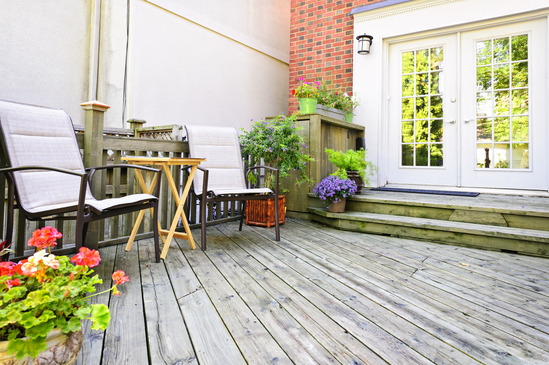
For many people, the simplest answer is to get a pressure washer and blast everything off the deck. Unfortunately, in many cases you can end up doing more harm than good. Especially where trees are concerned, you don’t want your deck in a spot that makes it subject to too much light, nor do you want it too shaded and thereby making it more conducive for mold and algae to grow. Here are some of our recommendations for protecting your deck from the world outdoors.
1. Know Your Enemies

The first step in solving any problem is to identify its source. When a wooden deck starts decaying, there are a number of culprits that might be to blame. You can’t avoid most of these enemies but you can take steps to mitigate the damage they cause.
For instance, rain is a huge issue as is snow and ice during the colder months. They can warp and damage the wood. Plus, if you live in an especially snowy area, the products that are traditionally used to melt away the ice and snow can often do more harm than good. In these situations, trees can be a real problem or a real deck-saver. If the tree is shading the deck too much, then the rain can soak and absorb into the wood. You don’t want that, and you’ll want to contact a tree removal service to take care of it.
Conversely, if you don’t have enough trees then the UV rays from sunlight can fade composite decks and discolor wooden ones. The growth of organisms such as mold, mildew, algae and fungus can do a number on any wooden structure as well, so it helps to be prepared to deal with them as well.
Lastly, of course, you have to consider the human element; everything from foot traffic to spilled drinks can accelerate the decay and shorten the life of your deck.
2. Dealing With Water, Snow, And Ice
During the cold and rainy season, an outdoor deck may get truly battered by the elements. While there’s not much you can do to prevent this, you can take steps to mitigate the damage as much as possible.
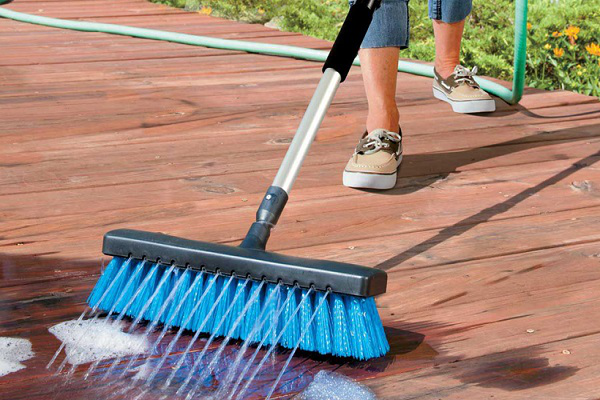
The first priority is to remove any standing water from the deck, which is as simple as brushing or sweeping any puddles away. You can do the same with snow that’s piled up; avoid using a shovel because it can gouge and dent the wood. If you have to use one, make sure it’s plastic and not steel and chip away at the hardened snow gently to avoid doing any damage.
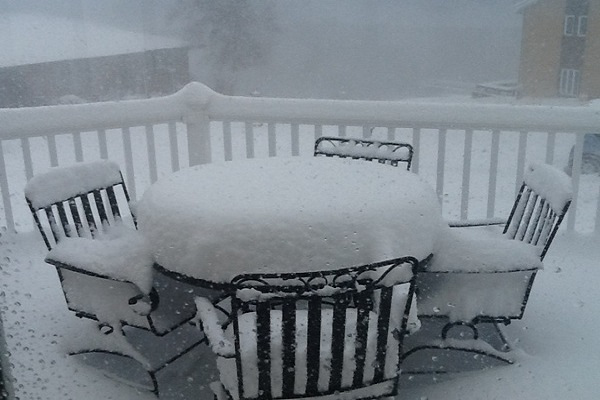
When removing ice, you’ll need to look for products that are safe for use on a wooden or composite deck. Products like salt and calcium chloride can damage the wood as well as corrode the fasteners and even electrical conduits. Search for products that minimize corrosion.
3. Protect From UV Rays
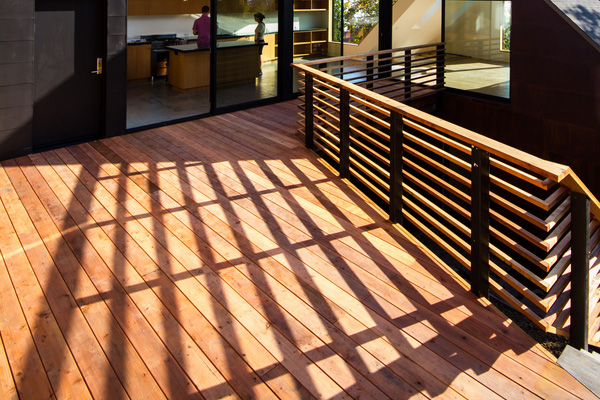
Another unavoidable force of nature, the sunlight is what you’ve been looking forward to but can also do a number on your deck. The UV radiation can damage the lining in wood in a process called photo-oxidation, which can cause a number of issues in natural wood.
Composite decks can also lose their gloss and warp when exposed to UV radiation. Avoiding this is a matter of properly treating the wood or other material. The more opaque the finish, the better it is at absorbing UV radiation. This means if you paint the deck it will offer protection; however, if you want a transparent finish to give the wood a natural look then you’ll need to search for a product containing titanium white (KX) which helps to absorb the radiation. Essentially this serves as sunscreen for the wood. The deck should be professionally resealed every few years for best results.
4. Prevent The Growth Of Molds, Mildews, and Fungi
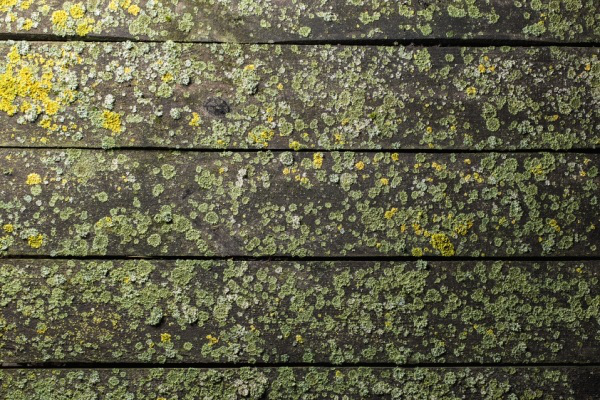
Too much shade over your deck and organisms such as mold and mildew can do a lot of damage to a deck. See, algae can grow in wood if there’s a constant source of water. Fortunately, this one is a relatively easy fix and can be solved with a simple tree removal, but other growths may be harder to deal with.
Mold spores will sit in the wood until conditions are ideal for them to grow. That’s why it’s best to do a cleaning to remove mildew and mold spores when it’s nice and hot outside; the hot, dry climate is not conducive to the growth of mold. The area will dry quickly in the heat and this should help to eliminate the majority of mold spores and mildew. A mild treatment solution made from vinegar, ammonia-free detergent and water can be applied for 15 minutes to the deck to kill any remaining spores. Make sure to wear gloves when you’re applying this solution; that way, you can protect your skin and rinse it off afterwards. Once again, having the deck treated by a professional every five years or so should help to mitigate a lot of the problems.
5. Avoid Man-Made Problems
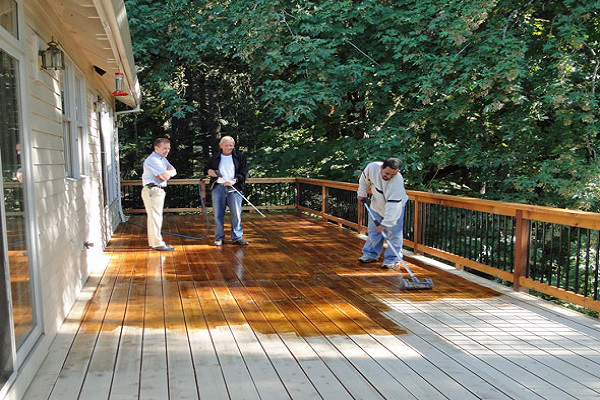
The deck can be damaged by everything from sunscreen to spilled drinks, but most of those issues can be avoided with ease. For example, if you’re applying sunscreen, don’t do it over the deck. This applies specially to spray-on sunscreen which can stain the wood. Use coasters for drinks and place a mat underneath grills to avoid spilled grease. Of course, make sure to sweep and clean regularly. As mentioned before, it’s a good idea to have a professional cleaning done every few years to extend the life of your deck.
Plus, you don’t want to build a deck underneath a tree that’s notorious for the amount of sap that drips down, so before you build your deck, consider your landscape and order tree removal where necessary!

